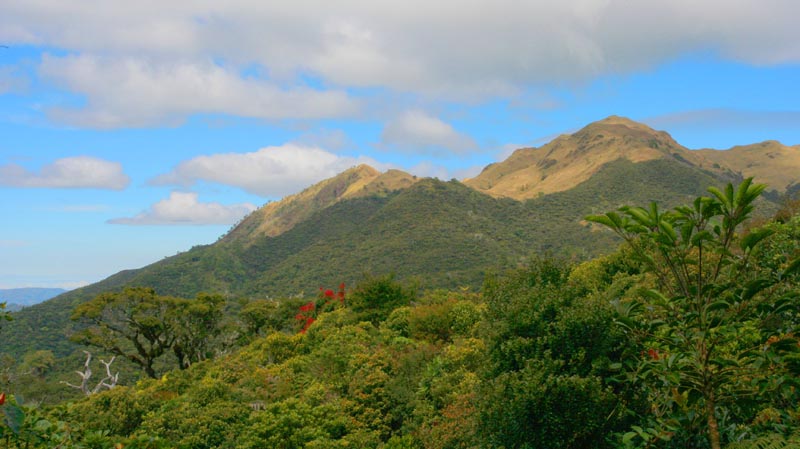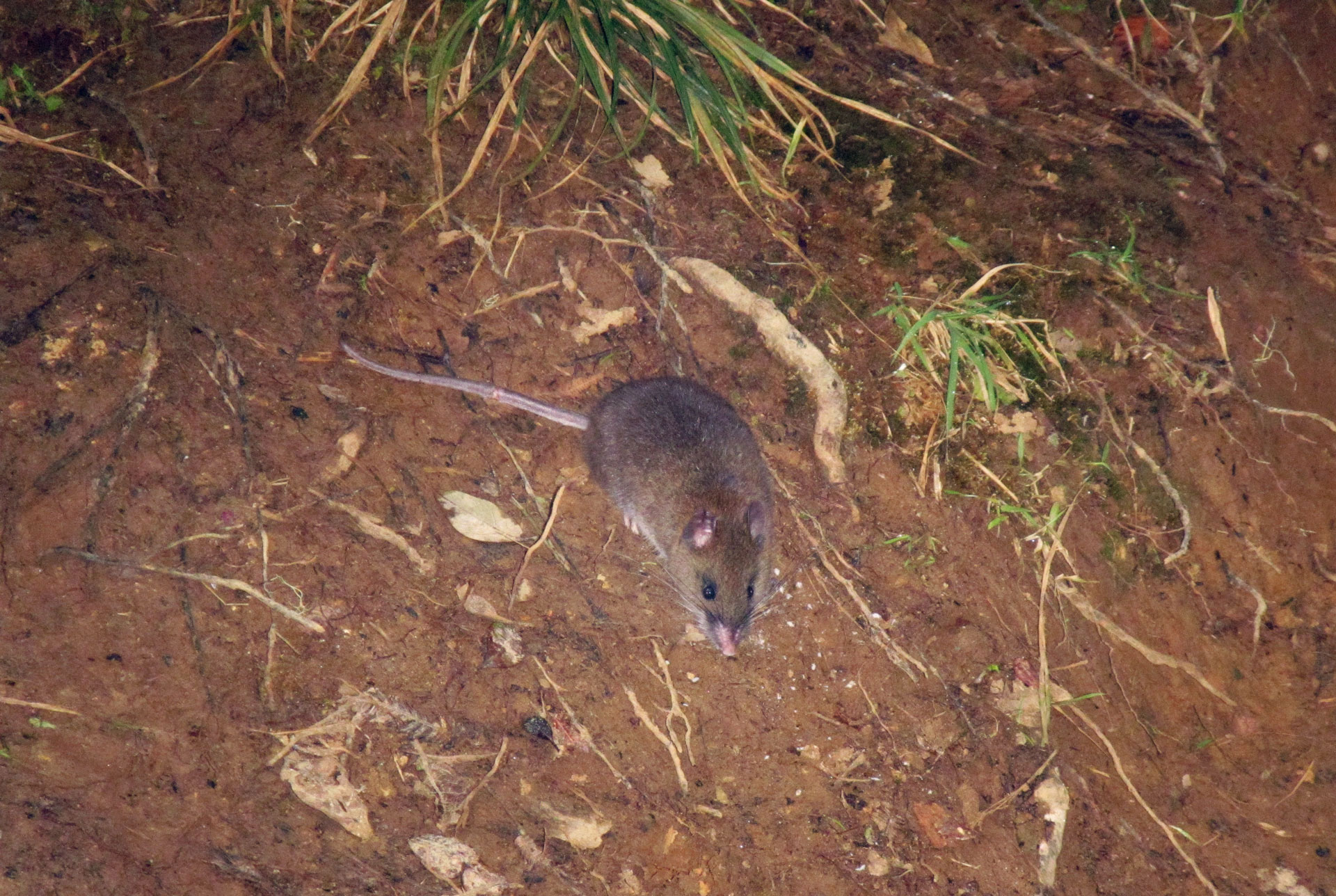Mount Pulag on:
[Wikipedia]
[Google]
[Amazon]
Mount Pulag ( fil, Bundok Pulag; ilo, Bantay Pulag) is  Mount Pulag is famous for its "
Mount Pulag is famous for its "
 Mount Pulag stands at high. The peak of the mountain is located in the Municipality of Kabayan Province of Benguet.
Mount Pulag stands at high. The peak of the mountain is located in the Municipality of Kabayan Province of Benguet.

 Mount Pulag has a large diversity of flora and fauna, including many species that endemic to the mountain. Mount Pulag hosts 528 documented plant species. It is the natural habitat of the dwarf bamboo (''
Mount Pulag has a large diversity of flora and fauna, including many species that endemic to the mountain. Mount Pulag hosts 528 documented plant species. It is the natural habitat of the dwarf bamboo (''
 As the highest mountain in Luzon, Mount Pulag attracts a lot of mountain climbers. Highlights of the climb include the montane forests and the grassland summit with its "sea of clouds" phenomenon. There are four major trails up the summit: the Ambangeg, Akiki, and Tawangan trails from Benguet and the Ambaguio trail from Nueva Vizcaya. These trails are managed by the Mount Pulag National Park, under the Department of Environment and Natural Resources.
As the highest mountain in Luzon, Mount Pulag attracts a lot of mountain climbers. Highlights of the climb include the montane forests and the grassland summit with its "sea of clouds" phenomenon. There are four major trails up the summit: the Ambangeg, Akiki, and Tawangan trails from Benguet and the Ambaguio trail from Nueva Vizcaya. These trails are managed by the Mount Pulag National Park, under the Department of Environment and Natural Resources.
Mount Pulag National Park
– BirdLife Data Zone {{authority control Pulag Landforms of Benguet Landforms of Ifugao Landforms of Nueva Vizcaya National parks of the Philippines Protected areas established in 1987 Tourist attractions in Benguet World Heritage Tentative List for the Philippines Two-thousanders of Asia
Luzon
Luzon (; ) is the largest and most populous island in the Philippines. Located in the northern portion of the Philippines archipelago, it is the economic and political center of the nation, being home to the country's capital city, Manila, as ...
's highest peak at above sea level, third-highest mountain in the Philippines, and the 26th-highest peak of an island on Earth. It is second-most prominent mountain in the Philippines, it is a dormant volcano. Located on the triple border of the provinces of Benguet, Ifugao
Ifugao, officially the Province of Ifugao ( ilo, Probinsia ti Ifugao; tl, Lalawigan ng Ifugao), is a landlocked province of the Philippines in the Cordillera Administrative Region in Luzon. Its capital is Lagawe and it borders Benguet to the ...
, and Nueva Vizcaya, the borders meet at the mountain's peak. Mount Pulag is third highest next to Mount Apo
Mount Apo, also known locally as Apo Sandawa, is a large solfataric, dormant stratovolcano on the island of Mindanao, Philippines. With an elevation of above sea level, it is the highest-mountain in the Philippine Archipelago, Mindanao and 24 ...
and Mount Dulang-dulang.
 Mount Pulag is famous for its "
Mount Pulag is famous for its "sea of clouds
A sea of clouds is an overcast layer of clouds, as viewed from above, with a relatively uniform top which shows undulations of very different lengths resembling waves on the sea. A sea of fog is formed from stratus clouds or fog and does not ...
" and its exceptional view of the Milky Way Galaxy at dawn, which has attracted many tourists who wish to see the "other-worldly" scenery.
The entire mountain is believed to be the home to the ''tinmongao'' spirits and is the sacred resting ground of the souls of the Ibaloi people and other ethnic peoples in the area.
History
The Ibaloi people of Benguet mummify their dead and house them in caverns in the mountain. The Kabayan mummy burial caves, one of the main attraction of the site, are considered Philippine national cultural treasures under Presidential Decree No. 432. Mt. Pulag was proclaimed anational park
A national park is a natural park in use for conservation purposes, created and protected by national governments. Often it is a reserve of natural, semi-natural, or developed land that a sovereign state declares or owns. Although individual ...
through Presidential Proclamation No. 75 on February 20, 1987 covering an area of . It is part of the Cordillera Biogeographic Zone and is a National Integrated Protected Areas Programme (NIPAP) site.
The national park is inhabited by different ethnic groups such as the Ibalois, Kalanguya, Kankana-eys, Karao, and Ifugao
Ifugao, officially the Province of Ifugao ( ilo, Probinsia ti Ifugao; tl, Lalawigan ng Ifugao), is a landlocked province of the Philippines in the Cordillera Administrative Region in Luzon. Its capital is Lagawe and it borders Benguet to the ...
s.
Geography
 Mount Pulag stands at high. The peak of the mountain is located in the Municipality of Kabayan Province of Benguet.
Mount Pulag stands at high. The peak of the mountain is located in the Municipality of Kabayan Province of Benguet.
Climate
The climate at the summit of Mount Pulag issubpolar oceanic
An oceanic climate, also known as a marine climate, is the humid temperate climate sub-type in Köppen classification ''Cfb'', typical of west coasts in higher middle latitudes of continents, generally featuring cool summers and mild winters ( ...
( Köppen ''Cwc''), bordering a subtropical highland ( Köppen ''Cwb'') climate, as its summer mean temperatures only slightly exceed 10 degrees Celsius. Rainfall on the mountain averages yearly with August being the wettest month with an average rainfall of . Snow has not fallen on its top in at least the past 100 years, only hailstorms that look like snow. However, there have been mild flurries on the mountain, especially during December, January and February. Frost is more common on the mountain due to the low temperature during those months. During the winter season, the temperature at the highest point of the mountain is known to dip into sub-freezing temperatures, making it the coldest place in the country. The only recorded incidence of snow was in the late 1800s.
Fauna and flora

 Mount Pulag has a large diversity of flora and fauna, including many species that endemic to the mountain. Mount Pulag hosts 528 documented plant species. It is the natural habitat of the dwarf bamboo (''
Mount Pulag has a large diversity of flora and fauna, including many species that endemic to the mountain. Mount Pulag hosts 528 documented plant species. It is the natural habitat of the dwarf bamboo (''Yushania niitakayamensis
''Yushania'' is a genus of bamboo in the grass family.
Recent classification systems place ''Yushania'' in the tribe Arundinarieae.
The species of ''Yushania'' are evergreen, spreading, thornless bamboos native to Himalayan, African, Chinese, ...
'') and the Benguet pine ('' Pinus kesiya'') that dominate the areas of Luzon tropical pine forests
The Luzon tropical pine forests are a tropical coniferous forest ecoregion of the Philippines in the western Pacific Ocean. These pine forests are home to a large number of the island's endemic plants and animals.
Location and description
Luzon ...
found on the mountainsides. The Philippine yew tree, which contains a compound associated with cancer treatment, is found on Mount Pulag. Its bark is used by indigenous Ibaloi and Kalanguya communities to make tea.
At lower elevations, Mount Pulag has a mossy forest full of ferns, lichens, and moss.
Among its native wildlife are 33 bird species and several threatened mammals such as the Philippine deer, giant bushy-tailed cloud rat (''bowet'') and the long-haired fruit bat. Mount Pulag is the only place that hosts the four cloud rat species. It is one of the most biodiverse locations in the Philippines, with the newly found (since 1896) 185-grams dwarf cloud rat, '' Carpomys melanurus'', a rare breed (endemic to the Cordillera), and the Koch pitta bird among its endangered denizens.
Conservation efforts
In April 2022, President Rodrigo Duterte signed a law declaring Mount Pulag as a protected landscape under theNational Integrated Protected Areas System
This is a list of protected areas of the Philippines administered by the Department of Environment and Natural Resources (DENR)'s Biodiversity Management Bureau under the National Integrated Protected Areas System (NIPAS) Act of 1992. As of 202 ...
.
Hiking activity
 As the highest mountain in Luzon, Mount Pulag attracts a lot of mountain climbers. Highlights of the climb include the montane forests and the grassland summit with its "sea of clouds" phenomenon. There are four major trails up the summit: the Ambangeg, Akiki, and Tawangan trails from Benguet and the Ambaguio trail from Nueva Vizcaya. These trails are managed by the Mount Pulag National Park, under the Department of Environment and Natural Resources.
As the highest mountain in Luzon, Mount Pulag attracts a lot of mountain climbers. Highlights of the climb include the montane forests and the grassland summit with its "sea of clouds" phenomenon. There are four major trails up the summit: the Ambangeg, Akiki, and Tawangan trails from Benguet and the Ambaguio trail from Nueva Vizcaya. These trails are managed by the Mount Pulag National Park, under the Department of Environment and Natural Resources.
Incidents
Presidential helicopter crash
On April 7, 2009, a Philippine Air Force (PAF) Bell 412 of the 250th Presidential Airlift Wing crashed at above sea level in the Kabayan-Pulag pass between Mount Mangingihi and Mount Pulag in thick low cloud and fog. The aircraft pilots and their passengers, who were presidential appointees, died in the crash.January 2018 forest fire
On January 20, 2018, the Mount Pulag National Park temporarily suspended trekking and hiking activities on Mount Pulag following a forest fire at a section of the mountain. According to an initial investigation, the fire started when a butane gas stove brought by a hiker allegedly exploded. The fire officers in site have declared a fire extinguished later that day. Suits were afterwards filed against the perpetrators of the fire. Park rangers estimated that it will take at least 6 months to 1 year before the area completely recovers.See also
* List of mountains in the Philippines * List of national parks of the Philippines * List of Southeast Asian mountainsReferences
External links
Mount Pulag National Park
– BirdLife Data Zone {{authority control Pulag Landforms of Benguet Landforms of Ifugao Landforms of Nueva Vizcaya National parks of the Philippines Protected areas established in 1987 Tourist attractions in Benguet World Heritage Tentative List for the Philippines Two-thousanders of Asia